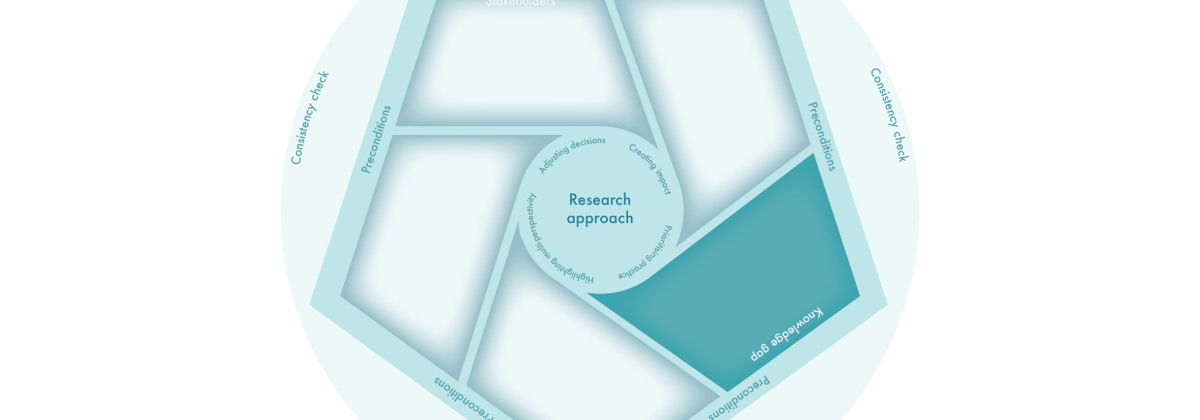The knowledge, working methods and tools offered in this element can be used by researchers at their own discretion to obtain an overview of the state-of-the-art knowledge available with regard to the practice issue for which a research proposal is being developed and what knowledge is still lacking in it.
Tips for project leaders and process managers
The literature review during the development of a research proposal will mainly be performed by the researchers in the partnership. From the CAYR methodology, it is assumed that the researchers involved already have expertise on the topics relevant to the practice issue. If this is not the case, the right researchers may not be involved; it is then advisable to critically consider whether other researchers should be involved. In addition to applying their own expertise, the researchers may of course question other members of the partnership on their relevant expertise and knowledge of the practice issue and possible solutions.
At this stage of developing a research proposal, it is not possible to conduct a comprehensive literature review, such as a systematic literature review. Notwithstanding, a scoping review (Kastner et al., 2012) or the snowball method can be performed. It is always wise to first also consult some experts outside of the partnership who can refer to important publications and trends in the literature.
Creating an overview of existing and missing knowledge involves four steps:
- Establishing the knowledge required: what do we need to know to get started with the practice issue?
- Finding out the available knowledge in general: what knowledge is already available from the scientific and professional literature and among those involved in practice, and what is the quality of this knowledge?
- What is the gap between required and available knowledge? We call this gap the ‘knowledge gap’.
- What part of that gap will this study fill? This is a first step towards defining the knowledge objective of the research project.
We briefly walk through the steps:
- The first step of identifying required knowledge has also been partly addressed when exploring the practice issue. Here, experts and stakeholders in practice play an important role.
- The second step includes a literature review, among other things. The tool below, ‘Supporting questions in mapping the state-of-the-art’, contains a description of seven functions that literature reviews can have in a practice-based research project. In addition to literature reviews, experts, professionals and clients often have a lot of knowledge on the practice issue readily available. Sometimes that knowledge is already so rich that the main purpose of a study is to make this knowledge explicit and validate it.
- Step three, determining the knowledge gap, is done in close consultation with stakeholders in practice. In this step, there is a great risk of researchers being excessively guided by their own insights or interests, which may result in the final research question being too far removed from practice.
- The fourth step, concretising the knowledge objective, is necessary because a study can almost never fill the entire knowledge gap of step 3. Delineation is necessary, also in light of the preconditions subject to which the study should be conducted.
Tool
- Finally, it is wise to discuss the results of mapping the state-of-the-art and the knowledge gap with all members of the partnership. This can start with a presentation. In this, the ‘supporting questions in mapping the state-of-the-art’ can be used as a structure. Three questions can then be put to the participants:
- What clarifying questions do I have?
- What additions, if any, do I have?
- What, if any, restatement of the practice issue do I have?
More information and tools for mapping the state-of-the art and the knowledge gap
The ‘CAYR as a complete 10-step process’ manual provides a workshop called ‘Exploring the objectives’ on page 29. The first three parts of this workshop combine different working methods to enable a partnership (a collaborative group) to learn about the results: the mapped state-of-the-art and knowledge gaps around a practice issue. The description of the first three steps of this workshop can give project leaders and process managers more insight into how to solicit input and feedback on the state-of-the-art and knowledge gaps, from all members of a partnership. They can also serve as inspiration for how meetings can be organised on the basis of the basic principles of CAYR.
Additional helpful tool
